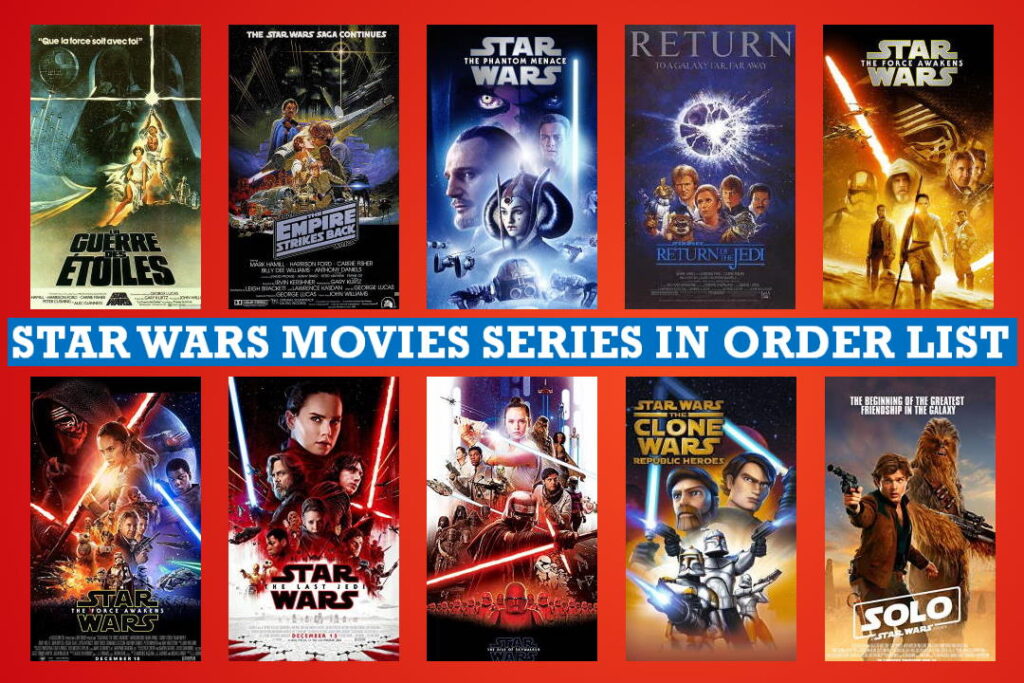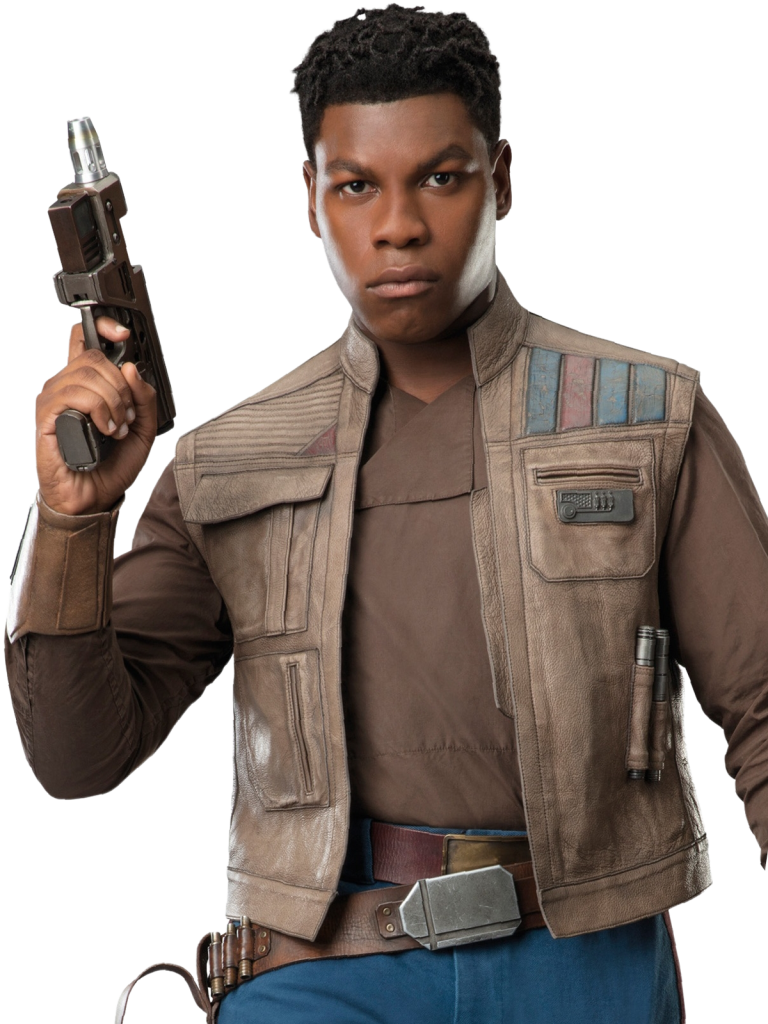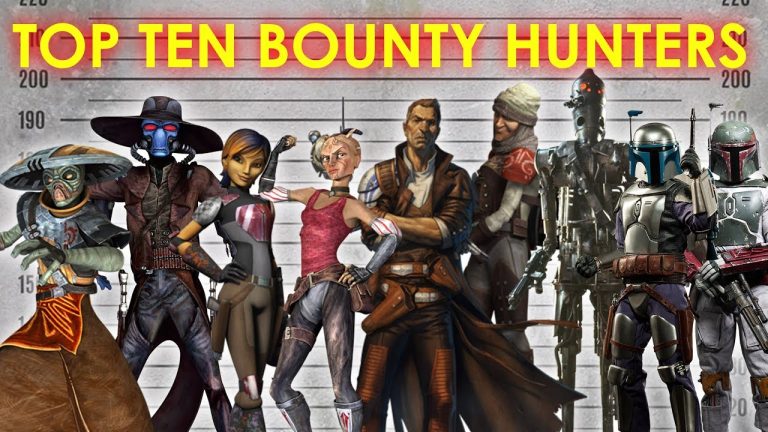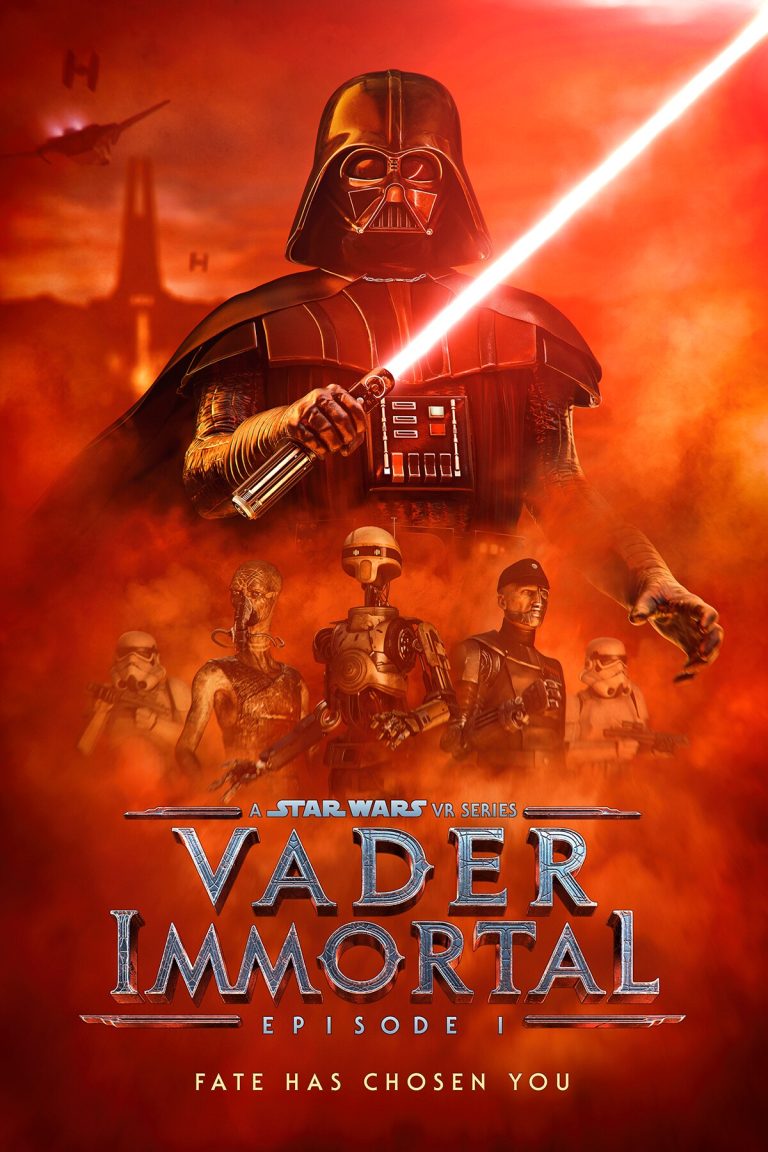How Many Movies In The Star Wars Series?
Hey there, Star Wars enthusiasts! Ever wondered how many movies are in the iconic Star Wars series? Well, you’re in luck because I’m here to quench your curiosity. In this article, we’ll dive into the galaxy far, far away and explore just how many movies have been released in this epic space opera franchise. So, grab your lightsabers and get ready for an adventure!
When it comes to the Star Wars series, it has become a cultural phenomenon with a dedicated fan base spanning generations. From its humble beginnings in 1977 to the present day, this franchise has captured the hearts of millions around the world. But just how many movies are there in the Star Wars series? Well, the answer is not as simple as you might think. So, let’s break it down and discover the true number of films that make up this legendary saga. Get ready for a journey through time and space as we explore the vastness of the Star Wars cinematic universe. May the Force be with us!
The Star Wars series consists of nine main saga films. These include “Star Wars: Episode IV – A New Hope” (1977), “Star Wars: Episode V – The Empire Strikes Back” (1980), “Star Wars: Episode VI – Return of the Jedi” (1983), “Star Wars: Episode I – The Phantom Menace” (1999), “Star Wars: Episode II – Attack of the Clones” (2002), “Star Wars: Episode III – Revenge of the Sith” (2005), “Star Wars: Episode VII – The Force Awakens” (2015), “Star Wars: Episode VIII – The Last Jedi” (2017), and “Star Wars: Episode IX – The Rise of Skywalker” (2019).

How Many Movies in the Star Wars Series?
Star Wars is one of the most iconic and beloved film franchises in the world. Since the release of the first film in 1977, it has captivated audiences with its epic storytelling, memorable characters, and groundbreaking special effects. Over the years, the Star Wars series has expanded beyond the original trilogy, with prequels, sequels, and standalone films. So, how many movies are there in the Star Wars series? Let’s dive into the galaxy far, far away and explore the cinematic journey of Star Wars.
The Original Trilogy: A New Hope, The Empire Strikes Back, and Return of the Jedi
The Star Wars saga began with the release of “Star Wars: Episode IV – A New Hope” in 1977, which later came to be known simply as “Star Wars.” Directed by George Lucas, the film introduced audiences to a galaxy at war, the Rebel Alliance fighting against the tyrannical Galactic Empire, and a young farm boy named Luke Skywalker who discovers his destiny as a Jedi Knight. The film was a massive success, both critically and commercially, and became a cultural phenomenon.
The success of “A New Hope” led to the release of two sequels, “Star Wars: Episode V – The Empire Strikes Back” in 1980 and “Star Wars: Episode VI – Return of the Jedi” in 1983. These films continued the story of Luke Skywalker, Princess Leia, Han Solo, and the rest of the Rebel Alliance as they battled against the Empire. The original trilogy concluded with “Return of the Jedi,” bringing the epic saga to a satisfying and emotional end.
The Prequel Trilogy: The Phantom Menace, Attack of the Clones, and Revenge of the Sith
In 1999, George Lucas returned to the Star Wars universe with “Star Wars: Episode I – The Phantom Menace.” Set before the events of the original trilogy, the film explored the rise of the Sith, the origins of Darth Vader, and the downfall of the Galactic Republic. Despite mixed reviews from fans and critics, the film was a box office success and paved the way for two more prequels.
“Star Wars: Episode II – Attack of the Clones” was released in 2002, followed by “Star Wars: Episode III – Revenge of the Sith” in 2005. These films delved deeper into the story of Anakin Skywalker’s transformation into Darth Vader, the clone wars, and the fall of the Jedi Order. While the prequel trilogy received a mixed response from fans, it added new layers to the Star Wars mythology and expanded the scope of the galaxy.
The Sequel Trilogy: The Force Awakens, The Last Jedi, and The Rise of Skywalker
After a long hiatus, the Star Wars saga continued with the release of “Star Wars: Episode VII – The Force Awakens” in 2015. Directed by J.J. Abrams, the film introduced a new generation of characters, including Rey, Finn, and Poe Dameron, while also reuniting fans with familiar faces like Han Solo, Leia Organa, and Luke Skywalker. “The Force Awakens” was a critical and commercial success, reigniting the passion for Star Wars and setting the stage for a new trilogy.
“The Last Jedi,” directed by Rian Johnson, followed in 2017, expanding the storylines of the new characters and further exploring the conflict between the Resistance and the First Order. The sequel trilogy concluded with “Star Wars: Episode IX – The Rise of Skywalker” in 2019, directed by J.J. Abrams. This film brought the Skywalker saga to its ultimate conclusion, wrapping up the stories of Rey, Kylo Ren, and the battle between light and dark.
In addition to the nine main saga films, the Star Wars series also includes standalone films that expand the universe and explore different aspects of the story. These include “Rogue One: A Star Wars Story” (2016), which focuses on the mission to steal the Death Star plans, and “Solo: A Star Wars Story” (2018), which delves into the backstory of the iconic smuggler Han Solo.
Throughout the years, the Star Wars series has captivated audiences with its epic storytelling, memorable characters, and stunning visuals. Whether you’re a lifelong fan or new to the galaxy, the films offer a journey through a rich and expansive universe that continues to inspire and entertain.
Star Wars Movies: A Journey Through the Galaxy
The Original Trilogy: A New Hope, The Empire Strikes Back, and Return of the Jedi
The original Star Wars trilogy, consisting of “A New Hope,” “The Empire Strikes Back,” and “Return of the Jedi,” is the foundation of the Star Wars saga. These films introduced audiences to the iconic characters of Luke Skywalker, Princess Leia, Han Solo, and Darth Vader, and told the story of the Rebel Alliance’s fight against the Galactic Empire. Each film built upon the previous one, deepening the mythology and expanding the universe.
In “A New Hope,” we are introduced to a young farm boy named Luke Skywalker who discovers his connection to the Force and becomes embroiled in the conflict between the Rebel Alliance and the Empire. The film is a classic tale of good versus evil, with Luke and his allies banding together to destroy the Empire’s ultimate weapon, the Death Star.
“The Empire Strikes Back” takes the story to darker and more complex places, with the revelation of Darth Vader as Luke’s father and the Empire’s relentless pursuit of the Rebel Alliance. The film is widely regarded as one of the best in the series, with its iconic moments, such as the revelation of Luke’s parentage and the epic lightsaber duel between Luke and Vader.
“Return of the Jedi” brings the original trilogy to a satisfying conclusion, as the Rebels launch a final assault on the Empire and Luke confronts Vader and the Emperor. The film is known for its emotional climax, as Vader ultimately redeems himself and helps bring balance to the Force.
The Prequel Trilogy: The Phantom Menace, Attack of the Clones, and Revenge of the Sith
The prequel trilogy, consisting of “The Phantom Menace,” “Attack of the Clones,” and “Revenge of the Sith,” takes audiences back in time to explore the origins of characters like Anakin Skywalker and Obi-Wan Kenobi. Set before the events of the original trilogy, these films delve into the fall of the Galactic Republic and the rise of the Sith.
“The Phantom Menace” introduces young Anakin Skywalker, who is discovered by Jedi Knight Qui-Gon Jinn and his apprentice Obi-Wan Kenobi. The film also introduces important characters like Padmé Amidala and the villainous Darth Maul. While the film received mixed reviews, it expanded the Star Wars universe and set the stage for the events to come.
“Attack of the Clones” focuses on the growing tensions in the galaxy, as the Clone Wars begin and Anakin’s relationship with Padmé deepens. The film also introduces the character of Count Dooku, a Sith Lord who becomes a major antagonist in the trilogy. Despite some criticism, the film was praised for its action sequences and visual effects.
“Revenge of the Sith” is the darkest and most dramatic film in the prequel trilogy, as Anakin succumbs to the dark side of the Force and becomes Darth Vader. The film depicts the fall of the Jedi Order and the rise of the Empire, setting the stage for the events of the original trilogy. It is known for its emotional intensity and epic lightsaber battles.
The Sequel Trilogy: The Force Awakens, The Last Jedi, and The Rise of Skywalker
The sequel trilogy, consisting of “The Force Awakens,” “The Last Jedi,” and “The Rise of Skywalker,” continues the story of the Star Wars saga by introducing a new generation of characters and exploring the ongoing conflict between the Resistance and the First Order.
“The Force Awakens” reintroduces audiences to familiar faces like Han Solo, Princess Leia, and Luke Skywalker, while also introducing new characters like Rey, Finn, and Poe Dameron. The film follows their journey as they uncover the existence of a new superweapon and confront the dark side once again. It pays homage to the original trilogy while setting up new storylines and mysteries.
“The Last Jedi” takes the story in unexpected directions, challenging our preconceptions about the Force and the nature of heroism. The film explores the complexities of the characters and their struggles with their past and their future. It received mixed reactions from fans, with some praising its boldness and others criticizing its departure from traditional Star Wars storytelling.
“The Rise of Skywalker” brings the sequel trilogy to a grand finale, as the Resistance makes a final stand against the First Order and Rey confronts her true heritage and destiny. The film aims to tie up loose ends and provide closure for the characters and storylines. It was met with a mixed response from fans and critics, but it marked the end of the Skywalker saga.
In addition to the main saga films, the Star Wars series includes standalone films that explore different corners of the galaxy. “Rogue One” tells the story of the rebels who stole the Death Star plans, while “Solo” focuses on the early adventures of Han Solo. These films enrich the Star Wars universe and offer new perspectives on the familiar story.
The Star Wars series has become a cultural phenomenon, captivating audiences of all ages with its epic storytelling, iconic characters, and rich mythology. Whether you’re a die-hard fan or new to the galaxy, the films offer a thrilling and immersive experience that has stood the test of time. May the Force be with you as you embark on this cinematic journey through the Star Wars series.
Key Takeaways: How Many Movies Are in the Star Wars Series?
- There are a total of 11 movies in the Star Wars series.
- The main saga consists of 9 movies, starting with “Star Wars: Episode IV – A New Hope” in 1977 and concluding with “Star Wars: Episode IX – The Rise of Skywalker” in 2019.
- In addition to the main saga, there are two standalone movies: “Rogue One: A Star Wars Story” and “Solo: A Star Wars Story.”
- The Star Wars movies are loved by fans of all ages, including 13-year-old kids who can enjoy the thrilling adventures and iconic characters.
- Each movie in the series adds to the rich and expansive Star Wars universe, featuring epic battles, memorable moments, and a captivating storyline.
Frequently Asked Questions
Star Wars is one of the most popular film franchises in the world, captivating audiences with its epic space opera storytelling and iconic characters. With its rich universe, many fans wonder just how many movies are in the Star Wars series. Here, we answer some common questions about the number of films in the Star Wars franchise.
1. How many movies are there in the Star Wars series?
The Star Wars series currently consists of nine main saga films. These include the original trilogy (Episodes IV, V, and VI), the prequel trilogy (Episodes I, II, and III), and the sequel trilogy (Episodes VII, VIII, and IX). Additionally, there are standalone films like “Rogue One: A Star Wars Story” and “Solo: A Star Wars Story”. So, in total, there are currently eleven movies in the Star Wars series.
It’s worth noting that the Star Wars universe continues to expand with new releases planned for the future, including both films and TV series. So, the number of movies in the series may increase over time.
2. Are there any upcoming Star Wars movies?
Yes, there are several upcoming Star Wars movies in the works. Lucasfilm, the production company behind Star Wars, has announced plans for a new trilogy of films directed by Rian Johnson, the filmmaker behind “Star Wars: The Last Jedi”. These films will explore different corners of the Star Wars universe and introduce new characters and storylines.
In addition to the new trilogy, Lucasfilm is also developing standalone films that will focus on specific characters or events within the Star Wars universe. These films will provide fans with even more opportunities to dive deeper into the beloved franchise.
3. How do the standalone Star Wars films fit into the main saga?
The standalone Star Wars films, such as “Rogue One: A Star Wars Story” and “Solo: A Star Wars Story”, are set within the same universe as the main saga films but tell self-contained stories that are not directly connected to the main storyline. These standalone films provide additional context and expand upon certain events or characters mentioned in the main saga.
While the standalone films can be enjoyed on their own, they also enhance the overall Star Wars experience by adding depth and richness to the universe. They offer fans a chance to explore different perspectives and adventures within the Star Wars galaxy.
4. Is there a specific order to watch the Star Wars movies?
There are different viewing orders suggested by fans and experts, but the most common approach is to watch the Star Wars movies in chronological order of the story. This means starting with Episode I: “The Phantom Menace” and ending with Episode IX: “The Rise of Skywalker”.
However, some fans prefer to watch the movies in release order, which means starting with the original trilogy and then watching the prequels and sequels. Ultimately, the order in which you watch the movies is a personal choice and both approaches have their merits.
5. Are there any plans for more Star Wars TV series?
Yes, there are several Star Wars TV series in development. One of the most highly anticipated series is “The Mandalorian”, which premiered on Disney+ in 2019. The show follows the adventures of a bounty hunter in the Star Wars universe and has received critical acclaim for its storytelling and visual effects.
In addition to “The Mandalorian”, other Star Wars TV series are also in the works. These include a series centered around the character of Obi-Wan Kenobi, with Ewan McGregor reprising his role, and a series focused on the character of Cassian Andor from “Rogue One: A Star Wars Story”. These TV series will further expand the Star Wars universe and offer fans even more content to enjoy.
Final Summary: The Galactic Odyssey of Star Wars Movies
And there you have it, my fellow Jedi enthusiasts! The Star Wars saga has taken us on an epic journey across the galaxy, captivating our imaginations for decades. From the original trilogy to the prequels and sequels, this beloved franchise has given us a total of nine main movies to enjoy.
The force was strong with the original trilogy, consisting of three iconic films: “Star Wars: Episode IV – A New Hope,” “Star Wars: Episode V – The Empire Strikes Back,” and “Star Wars: Episode VI – Return of the Jedi.” These movies introduced us to the timeless characters of Luke Skywalker, Princess Leia, Han Solo, and Darth Vader, forever engraving them in pop culture history.
But the saga didn’t end there, my friends. The prequel trilogy then took us back in time, shedding light on the events that led to the rise of the Empire. “Star Wars: Episode I – The Phantom Menace,” “Star Wars: Episode II – Attack of the Clones,” and “Star Wars: Episode III – Revenge of the Sith” delved into the origins of Anakin Skywalker and explored the complex relationships between the Jedi and the Sith.
And finally, the sequel trilogy brought us new heroes and villains, carrying on the legacy of the original characters. “Star Wars: Episode VII – The Force Awakens,” “Star Wars: Episode VIII – The Last Jedi,” and “Star Wars: Episode IX – The Rise of Skywalker” introduced us to Rey, Finn, Poe Dameron, and the enigmatic Kylo Ren, captivating a new generation of fans.
So, whether you’re a die-hard Star Wars fanatic or a casual viewer, there’s no denying the impact and cultural significance of these movies. May the force be with you as you embark on your own Star Wars marathon, relishing in the epic storytelling, thrilling battles, and unforgettable characters that have made this series a true cinematic masterpiece.




